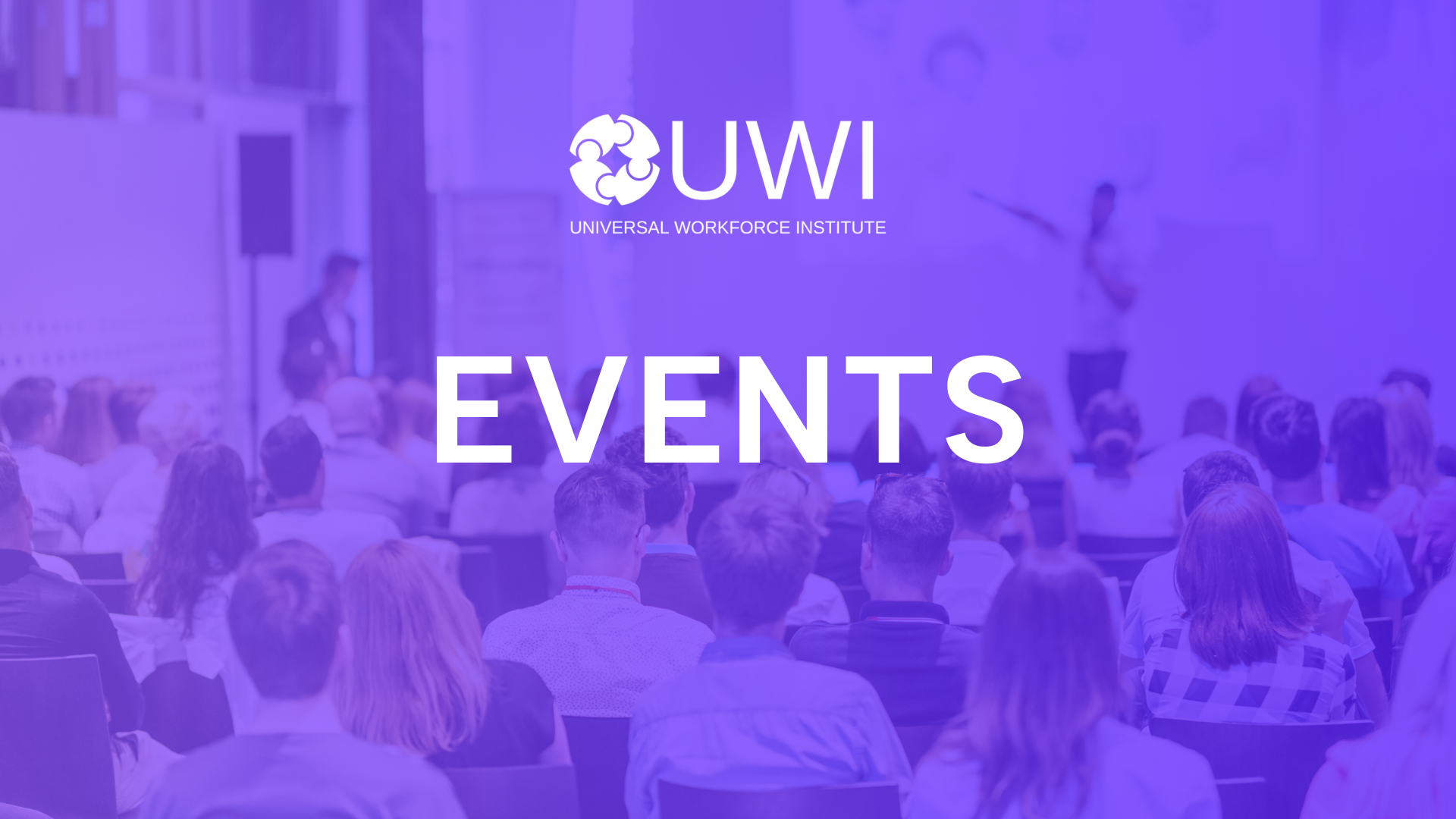Event Notes: Building Positive Habits in Neuroinclusivity
21 December, 2023, 10:23am GMT

By Erica Birtles

We held our first UWI hybrid workshop event yesterday–and boy was that a challenge! Nevertheless, despite our technology trying to resist change, it was also a great learning experience. Through the contributions of our remarkably expert panel we learned about the priorities, progress, challenges and remedies looking at how to attract and retain neurodivergent talent and how to nurture a diverse and inclusive workforce.
Priorities
The top two priorities of attendees were to create a belonging culture and educate hiring managers. The topic of education featured widely in the discussion that followed, and the importance of objectivity when it comes to priorities and working out ‘_..what the destination looks like,’_ as Jonathan Pilgrim, Partner at Make Change Happen, puts it.
Mike Clargo, CEO of Culturistics, makes the profound point that you _’get the behaviours that you reward,’_ while Kalpesh Baxi, Founding Partner of Critical Talent Solutions, makes the point, _’…when hiring for a job, your brochure won’t normally tell anyone about the culture and what’s it’s about… so it’s about honesty in communications.’
Jonathan Pilgrim adds, ‘When I do discovery for the first time in organizations around their change strategy and agenda, there is a lack of alignment. If people are not rewarded for the right behaviours, there will always be that kind of conflict between goals and outcomes.’
Tania Martin, EY Neuro Diverse Centre of Excellence Leader, says, ‘At EY we recognise there is a talent shortage in technology—we know that technology jobs are growing from 1.5 million this year to 5 million in 10 years’ time—and the traditional recruitment routes are not going to fill those vacancies.’
Progress
The best-covered building blocks were inclusive policies and recruitment and onboarding, whereas the weakest links were employee awareness and taking steps to ensure ‘whole workforce’ welfare.
Ritu Kiran-Jackson, CEO of Aubilities, says, ’Usually I would see this flipped around because the start-point is normally about listening as organizations lack a baseline and there’s a huge amount of work to be done there to establish a start-point.’
Jodie Greer makes the point that when she explores the topic of neurodiversity recruitment, firms often fixate on one demographic (i.e., dyslexia, autism, etc.) rather than a holistic approach that encourages building the belonging culture, so I think we need to change the narrative.’
Rebecca Friese, CEO of FLYN Consulting, thinks, ‘Wouldn’t it be great if people came to us with the challenge statement of “I want to create a diverse workforce because we believe XYZ” but even in this quick poll, we see that HR departments are completely overwhelmed. We never stop and ask ourselves why before we launch into these things.’
Tania explains ‘I think sometimes taking the first step is difficult, but taking it from the perspective of solving a business issue gets more buy-in than when it is simply about being a tick box exercise that somebody thinks they should be focused on.’
Challenges
‘Awareness, and recognising the value of neurodiversity’ was seen to be the biggest challenge HR and DE&I leaders faced in moving forward with a neurodiversity hiring and neuroinclusivity program. This was followed by ‘other priorities crowding out the topic.’
Nick Bruno, VP of People and Culture at Aspiritech, a company that operates a largely neurodiverse workforce says, _‘The change (to neuroinclusivity in the workforce) is not going to happen if your executive leadership team is not committed.’
Nick argues, ‘To make your organisation organisation a great place to work for neurodiverse talent, you’re going to have someone in the middle there who is championing that cause. And they’re getting pulled from one end to another if they’re not getting support from the leadership. If you don’t support them, that person is going to burn out and is going to leave… which means that person is going to make great change at another organisation. As a leader, you don’t want to end up in that position because neurodivergence is not going away, it’s going to the future in the workforce.
Ritu argues that education is a must, as Neurodiversity isn’t going anywhere and neurodiversity is on the rise. ‘It’s important to recognise the value of neurodivergent people in the workforce because they think differently. There is plenty of evidence to demonstrate these lateral thinking skills bring more to creativity, computing, etc. …and if you can understand how neurodivergent people are wired, you can get more out of them in terms of productivity.’
Tania says, ‘We (EY) have had a dedicated Neuro Diversity Centre in the UK for two years now and the ripple effect has been massive. Our community has gone from 150 people to 2000 people in just two years.’
Remedies
Creating safe spaces for neurodiverse workers was the top priority in the list of remedies we presented during the workshop. This was followed by raising awareness, replacing CVs with something more useful and education and welfare entered into our top 4 targeted remedies.
Nick says, ‘Any suggestion there is a lack of effective solutions is a mindset problem not a solutions problem. The solutions exist—they they are out there—and I I promise you, coming from an organisation that has the neurodiverse employee base that we do, the solutions are much simpler than we can make them seem at times. The start point is inevitably to gain the executive buy-in.’
Adam Mcrae MBE has been a senior officer in the British Army for over two decades. Adam says, _‘I tell people that I am dyslexic at the bottom of my LinkedIn profile, and it generates so much interest. I create that safe space that people can come to me and, when you do that, suddenly you find that peers you’ve been working for, sometimes for many years, are neurodivergent themselves. I guarantee if you have 20 people on the board of a Plc that someone in that group is neurodiverse.’
Rebecca says, ‘I just love this leaning into the topic of building a safe space. What I think everybody is saying here is you’re creating a space in which people can feel vulnerable and actually talk about what makes them different which what we all agree is actually what makes them special and valuable. It’s what helps you to know what special mix of skills they bring to the table. Creating a psychologically safe space starts with exposing vulnerability from the leadership. They need to be able to share what is authentic about them. That starts with surfacing that vulnerability—whether it’s their peers on the executive team or those that are you know in the staff and the employees in the organisation.’
Mike makes the point, ‘Neurodiversity for me would include anyone whose had mental health issues. When you make a culture accepting of neurodiverse people, you also make it accepting to neurotypical people. I’ve never seen myself as someone who’s had any mental issues, but I went through training with a consulting firm and, as someone who never saw himself as having suffered from depression it was interesting to discover that I and many of us have. As AI comes in, businesses are going to be more about change and people. A lot of the routine will be taken out by automation but everything will be changing so fast, and we need to learn from each about how we create an environment that’s a lot more supportive of people in that space.’
Final Thoughts
Our final thoughts are neatly summarised by Nick Bruno in his answer to the question of Challenges:
’It is estimated 15 to 20% of all adults has some kind of neurodivergent traits. When you’re tailoring your organisation specifically towards being good to someone who is neurodiverse… what we have learned at a spirit tech that in the changes we’re making… it’s not about being good to neurodiverse people, it’s about being good to people in general.
_
It’s about recognising and appreciating the human experience in the steps that you are taking to support your people, whether it’s during the in the interviewing process, whether it is during how you release and roll out new policies and procedures, whether it’s something as you know simple as how you are structuring your one on ones how you are delivering feedback.
If you are going at these topics from the perspective of how do I do this from a human centric point of view, you’re going to find a lot more success with your neurodivergent employees and, as a bi-product of that, you’re going to find a lot more success as an organisation. So, in conclusion, if you are tailoring solutions towards a neurodiverse audience, you are going to find success and sometimes even more success with your neurotypical talent as a result.’
